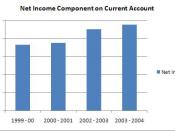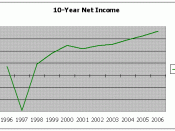IntroductionJim Reed II, owner of Reed's Clothier, is facing financial troubles. Reed is facing a potential loss of financing by the First Virginia National Bank. A 30-day deadline is closing in on a $130,000 bank note. Reed has $85,000 cash in reserves and $491,000 in inventory. To meet the financial obligations of the business, Reed must convert a portion of the inventory into cash. Financial ratio analysis will be provided to assess the past, present and future standings of the company, and to determine the best methods to restore the financial standings of the business.
Ratio Analysis and InterpretationsFinancial ratios are valuable tools easily calculated and interpreted from numbers in financial statements. Ratios can answer questions with regard to debt and inventory, receivables terms, expenses and assets. Ratios are used to determine the financial strengths and weaknesses of a company.
The ratios of Reed's Clothiers, as shown in exhibit one, show that the large amounts of inventory kept by the business negatively impacted the business.
The inventory turnover of Reed's Clothier is 2.9, as shown in Exhibit 1. The industry average has an inventory turnover of 7.0. Reed's Clothier also has a low quick ration, when compared to the industry average. The low quick ratio shows an inability to convert current assets, excluding inventory, into cash. The receivables turnover and the average collection period are two additional indicators of financial troubles. The low receivables turnover is a sign that the business in unable to collect on its account receivables.
The company has an average collection period of 74.1 days versus the industry average of 47.4 days. The payable turnover ratio is 7.0, less than half the 15.1 industry standard. These two ratios indicate Reed's' inability to collect its receivables and its inability to repay its debts to creditors. (Ratio calculations...


